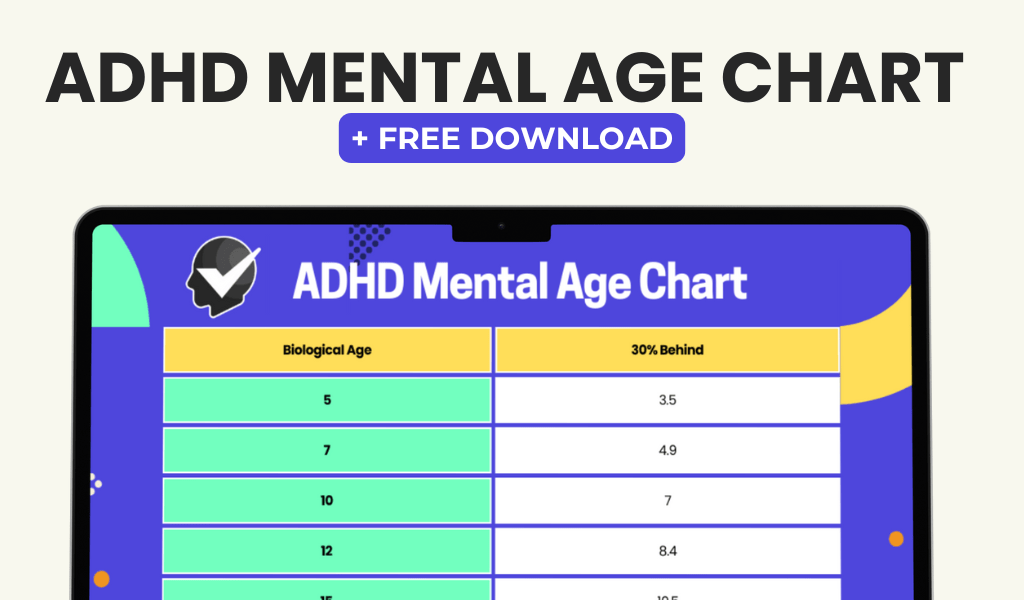ADHD, or Attention-Deficit/Hyperactivity Disorder, is a neurodevelopmental disorder characterized by a persistent pattern of inattention and/or hyperactivity-impulsivity that interferes with functioning or development. In the DSM 5, the Diagnostic and Statistical Manual of Mental Disorders, Fifth Edition, ADHD is classified as a neurodevelopmental disorder, which means it is a condition that begins in childhood and affects the development of the nervous system. The DSM 5 outlines specific criteria for diagnosing ADHD, including the presence of symptoms before the age of 12, symptoms that occur in multiple settings, and symptoms that significantly impair social, academic, or occupational functioning.
ADHD is further categorized into three subtypes in the DSM 5: predominantly inattentive presentation, predominantly hyperactive-impulsive presentation, and combined presentation. The predominantly inattentive presentation is characterized by symptoms such as difficulty sustaining attention, being easily distracted, and forgetfulness. The predominantly hyperactive-impulsive presentation is characterized by symptoms such as fidgeting, talking excessively, and difficulty waiting for a turn. The combined presentation involves a combination of both inattentive and hyperactive-impulsive symptoms. It’s important to note that the DSM 5 criteria for ADHD are used by mental health professionals to make an accurate diagnosis and develop an appropriate treatment plan for individuals with ADHD.
Key Takeaways
- ADHD in the DSM 5 is classified as a neurodevelopmental disorder characterized by symptoms of inattention, hyperactivity, and impulsivity.
- Symptoms and criteria for ADHD diagnosis include persistent patterns of inattention, hyperactivity, and impulsivity that interfere with functioning or development.
- ADHD testing and assessment involves a comprehensive evaluation of symptoms, medical history, and behavioral observations to determine a diagnosis.
- Understanding the different types of ADHD includes recognizing the predominantly inattentive type, predominantly hyperactive-impulsive type, and combined type.
- Self-care strategies for managing ADHD may include creating a structured routine, practicing mindfulness and relaxation techniques, and seeking support from friends and family.
- Treatment options for ADHD may include medication, behavioral therapy, and educational interventions tailored to the individual’s specific needs.
- Support and resources for individuals with ADHD can include support groups, educational workshops, and advocacy organizations that provide information and assistance for managing the condition.
Symptoms and Criteria for ADHD Diagnosis
The symptoms of ADHD can vary depending on the subtype and individual differences, but they generally fall into two categories: inattention and hyperactivity-impulsivity. Inattention symptoms may include difficulty sustaining attention in tasks or play activities, often making careless mistakes, being easily distracted by extraneous stimuli, and forgetfulness in daily activities. Hyperactivity-impulsivity symptoms may include fidgeting with hands or feet, leaving one’s seat in situations where remaining seated is expected, talking excessively, and difficulty waiting for one’s turn.
In order to receive a diagnosis of ADHD according to the DSM 5 criteria, an individual must exhibit at least six symptoms of either inattention or hyperactivity-impulsivity for children up to age 16, or at least five symptoms for adolescents 17 and older and adults. These symptoms must be present for at least six months and be inconsistent with developmental level. Additionally, the symptoms must cause significant impairment in social, academic, or occupational functioning. It’s important to note that the symptoms of ADHD can present differently in different individuals, and a thorough evaluation by a qualified mental health professional is necessary to make an accurate diagnosis.
ADHD Testing and Assessment
The process of testing and assessing for ADHD involves a comprehensive evaluation by a qualified mental health professional, such as a psychiatrist, psychologist, or clinical social worker. This evaluation typically includes a thorough review of the individual’s developmental history, medical history, and current symptoms. The mental health professional may also use standardized rating scales and questionnaires to gather information from the individual, their parents or caregivers, and teachers or other relevant individuals.
In addition to gathering information about the individual’s symptoms and functioning, the mental health professional may also conduct psychological testing to assess cognitive abilities, attention and executive functioning, and emotional and behavioral functioning. This testing may include measures of attention and concentration, memory, problem-solving skills, and emotional regulation. The goal of testing and assessment for ADHD is to gather comprehensive information about the individual’s symptoms and functioning in order to make an accurate diagnosis and develop an appropriate treatment plan.
Understanding the Different Types of ADHD
| Types of ADHD | Description |
|---|---|
| ADHD, Predominantly Inattentive Presentation | Difficulty paying attention, following through on tasks, and organizing tasks |
| ADHD, Predominantly Hyperactive-Impulsive Presentation | Difficulty sitting still, excessive talking, and impulsive behavior |
| ADHD, Combined Presentation | Combination of inattentive and hyperactive-impulsive symptoms |
ADHD is further categorized into three subtypes: predominantly inattentive presentation, predominantly hyperactive-impulsive presentation, and combined presentation. The predominantly inattentive presentation is characterized by symptoms such as difficulty sustaining attention, being easily distracted, forgetfulness, and disorganization. Individuals with this subtype may have trouble following instructions, completing tasks, or staying focused on activities. The predominantly hyperactive-impulsive presentation is characterized by symptoms such as fidgeting, talking excessively, difficulty waiting for a turn, and impulsivity. Individuals with this subtype may have trouble sitting still, waiting their turn, or engaging in activities quietly.
The combined presentation involves a combination of both inattentive and hyperactive-impulsive symptoms. Individuals with this subtype may exhibit a wide range of symptoms across both categories, making it challenging for them to focus on tasks, control their impulses, and regulate their behavior. It’s important to note that while these subtypes provide a framework for understanding the different presentations of ADHD, each individual with ADHD is unique and may experience a combination of symptoms from both categories.
Self-Care Strategies for Managing ADHD
Managing ADHD involves developing self-care strategies to help individuals cope with their symptoms and improve their functioning. Some self-care strategies for managing ADHD may include creating a structured daily routine to help with organization and time management, breaking tasks into smaller steps to make them more manageable, using visual aids or reminders to stay on track with responsibilities, and practicing mindfulness or relaxation techniques to reduce stress and improve attention.
In addition to these strategies, regular physical exercise can also be beneficial for managing ADHD symptoms by helping to reduce hyperactivity and impulsivity while improving attention and concentration. It’s also important for individuals with ADHD to prioritize sleep hygiene by establishing a consistent sleep schedule and creating a relaxing bedtime routine to improve sleep quality. Finally, seeking support from friends, family members, or support groups can provide valuable emotional support and practical assistance for managing ADHD.
Treatment Options for ADHD

There are several treatment options available for individuals with ADHD, including medication, therapy, and behavioral interventions. Stimulant medications such as methylphenidate (Ritalin) and amphetamine-dextroamphetamine (Adderall) are commonly prescribed to help manage symptoms of ADHD by increasing dopamine and norepinephrine levels in the brain. Non-stimulant medications such as atomoxetine (Strattera) and guanfacine (Intuniv) may also be prescribed to help improve attention and reduce impulsivity.
In addition to medication, therapy can be an effective treatment option for individuals with ADHD. Cognitive-behavioral therapy (CBT) can help individuals develop coping strategies for managing their symptoms and improving their functioning in various areas of life. Behavioral interventions such as parent training or classroom interventions can also be beneficial for children with ADHD by teaching parents and teachers how to create a structured environment that supports positive behavior.
Support and Resources for Individuals with ADHD
There are numerous support and resources available for individuals with ADHD to help them manage their symptoms and improve their quality of life. Support groups can provide valuable emotional support and practical advice for coping with the challenges of ADHD. These groups may be led by mental health professionals or peers who have experience living with ADHD.
In addition to support groups, there are also online resources such as websites, forums, and educational materials that provide information about ADHD and strategies for managing symptoms. These resources can be valuable for individuals seeking information about their condition or looking for practical tips for managing their symptoms.
Furthermore, advocacy organizations such as CHADD (Children and Adults with Attention-Deficit/Hyperactivity Disorder) provide support, education, and advocacy for individuals with ADHD and their families. These organizations offer resources such as educational workshops, conferences, and publications to help individuals with ADHD better understand their condition and access the support they need.
In conclusion, ADHD is a neurodevelopmental disorder characterized by persistent patterns of inattention and/or hyperactivity-impulsivity that interfere with functioning or development. The DSM 5 outlines specific criteria for diagnosing ADHD and categorizes it into three subtypes: predominantly inattentive presentation, predominantly hyperactive-impulsive presentation, and combined presentation. Testing and assessment for ADHD involve a comprehensive evaluation by a qualified mental health professional to gather information about an individual’s symptoms and functioning. Understanding the different types of ADHD can help individuals better understand their unique presentation of symptoms. Self-care strategies such as creating a structured routine, regular exercise, prioritizing sleep hygiene, seeking support from others can help individuals manage their symptoms. Treatment options for ADHD include medication, therapy, and behavioral interventions. Finally, there are numerous support and resources available for individuals with ADHD through support groups, online resources, advocacy organizations such as CHADD.
Looking for more information on ADHD and its diagnosis? Check out this informative article on ADHD testing at ADHD-testing.com. This article provides valuable insights into the process of diagnosing ADHD and the various testing methods available. It’s a must-read for anyone seeking a better understanding of ADHD and its assessment.
FAQs
What is the DSM-5?
The DSM-5, or Diagnostic and Statistical Manual of Mental Disorders, Fifth Edition, is a manual published by the American Psychiatric Association that provides criteria for the diagnosis of mental disorders.
Where is ADHD located in the DSM-5?
ADHD, or Attention-Deficit/Hyperactivity Disorder, is located in the DSM-5 under the section titled “Neurodevelopmental Disorders.”
What are the criteria for diagnosing ADHD in the DSM-5?
The DSM-5 outlines specific criteria for diagnosing ADHD, including symptoms of inattention, hyperactivity, and impulsivity that must be present for a certain period of time and have a significant impact on daily functioning.
Are there different types of ADHD listed in the DSM-5?
Yes, the DSM-5 includes three subtypes of ADHD: predominantly inattentive presentation, predominantly hyperactive-impulsive presentation, and combined presentation.
Is the DSM-5 the only diagnostic tool for ADHD?
While the DSM-5 is a widely used diagnostic manual, healthcare professionals may also use other assessment tools and measures to diagnose ADHD, such as behavioral observations, interviews, and rating scales.














